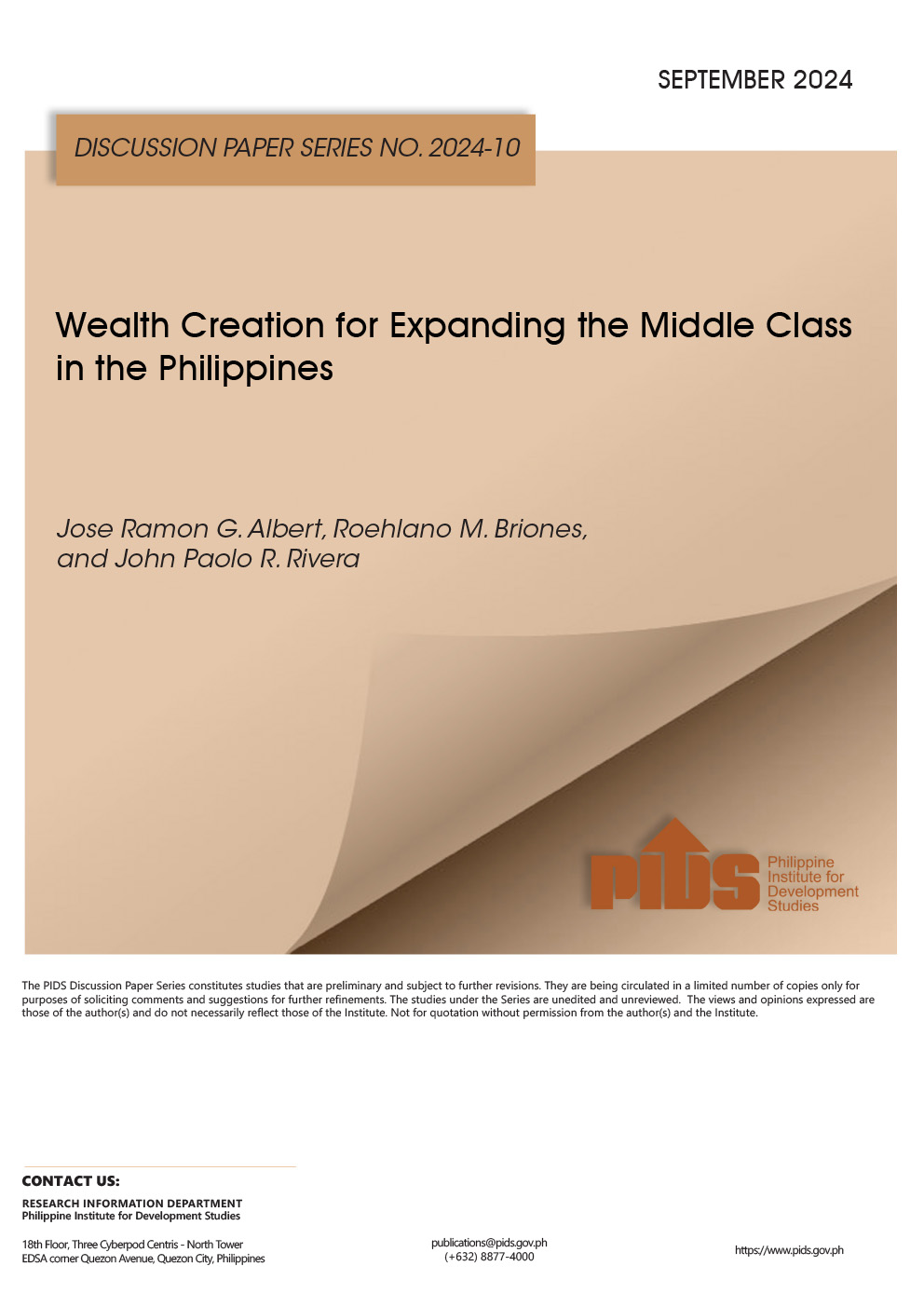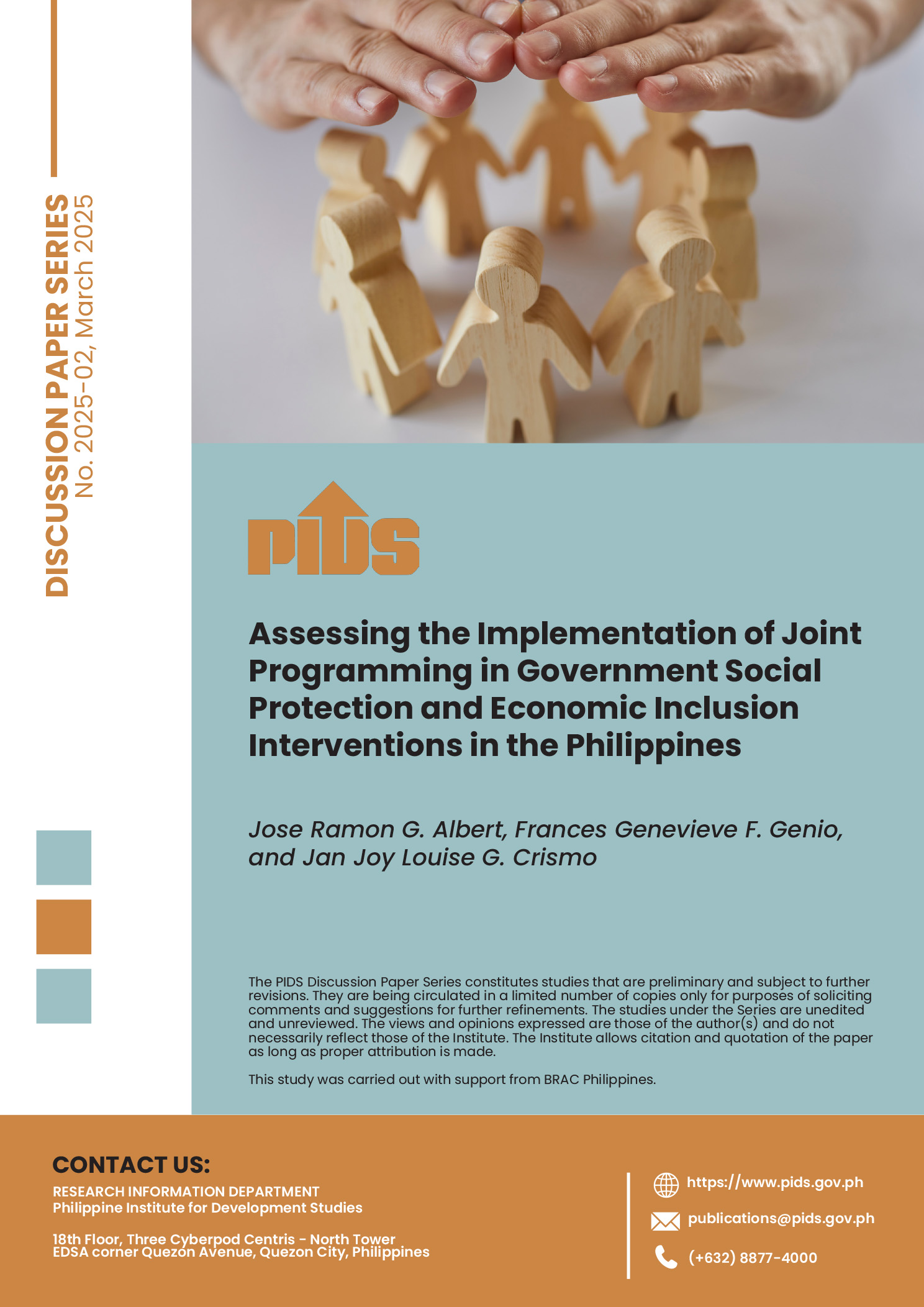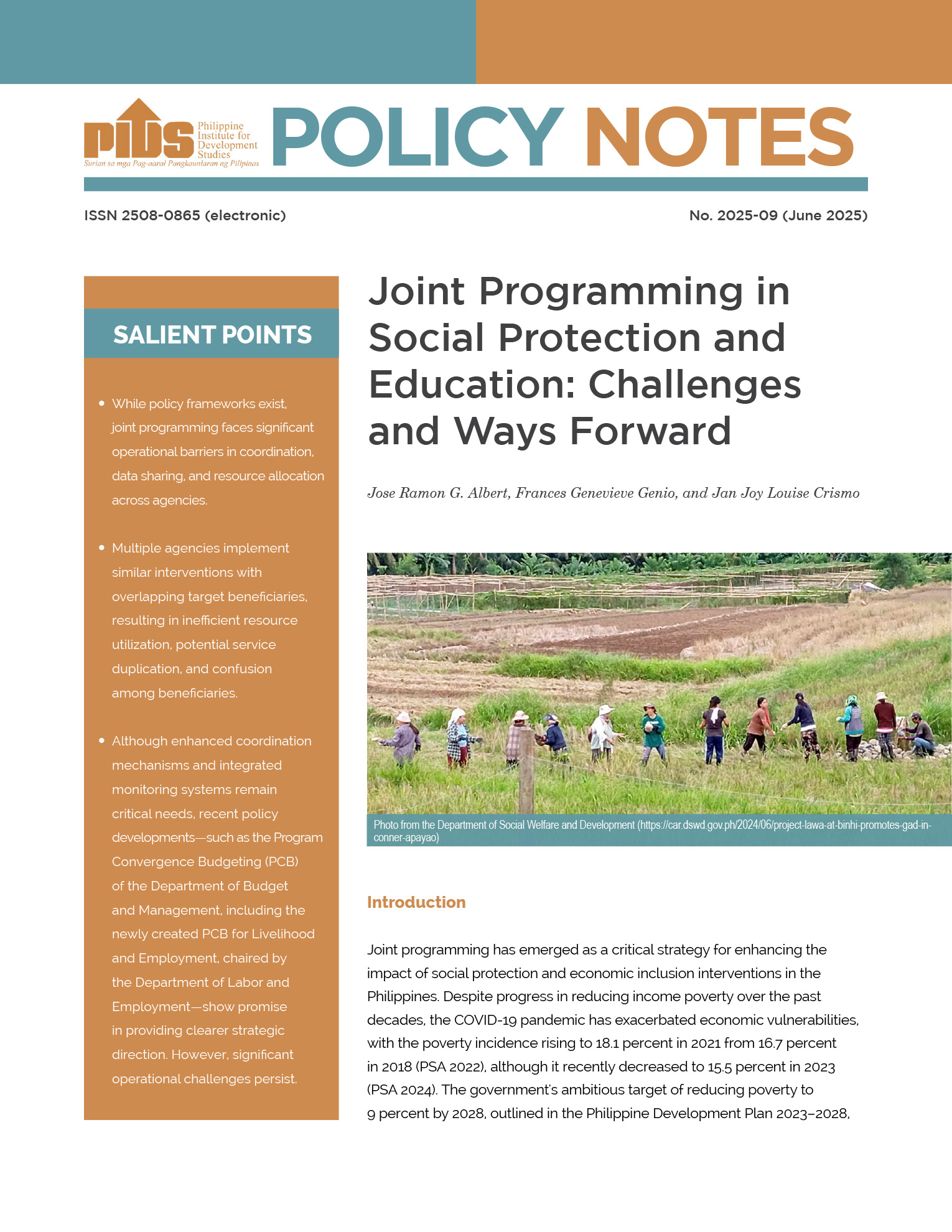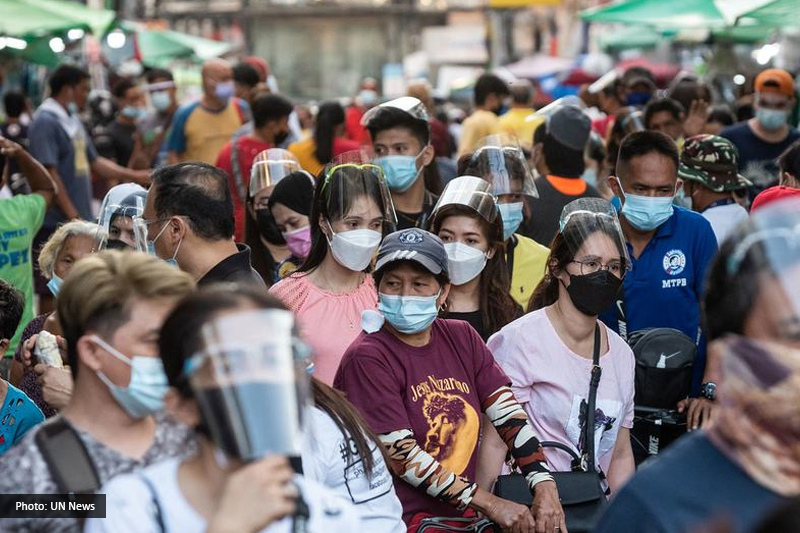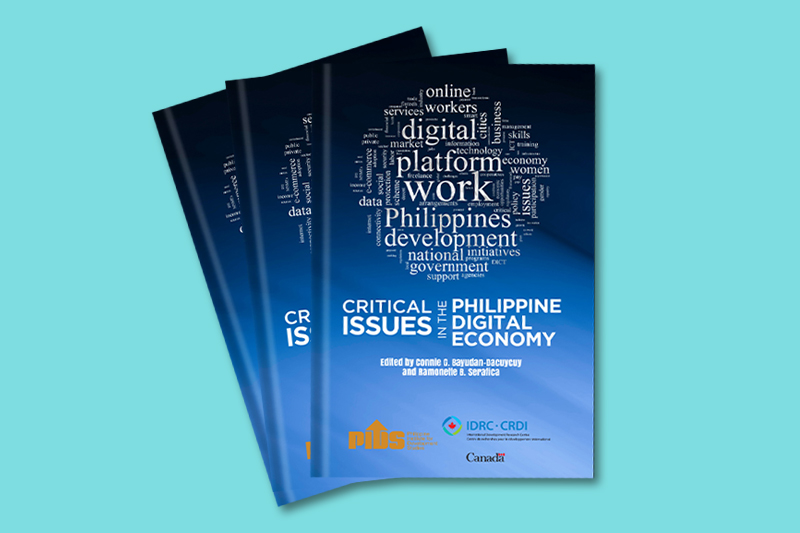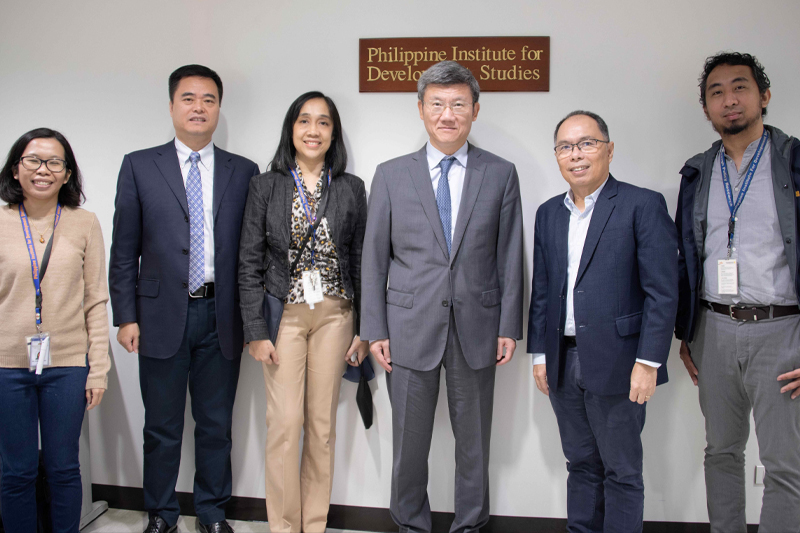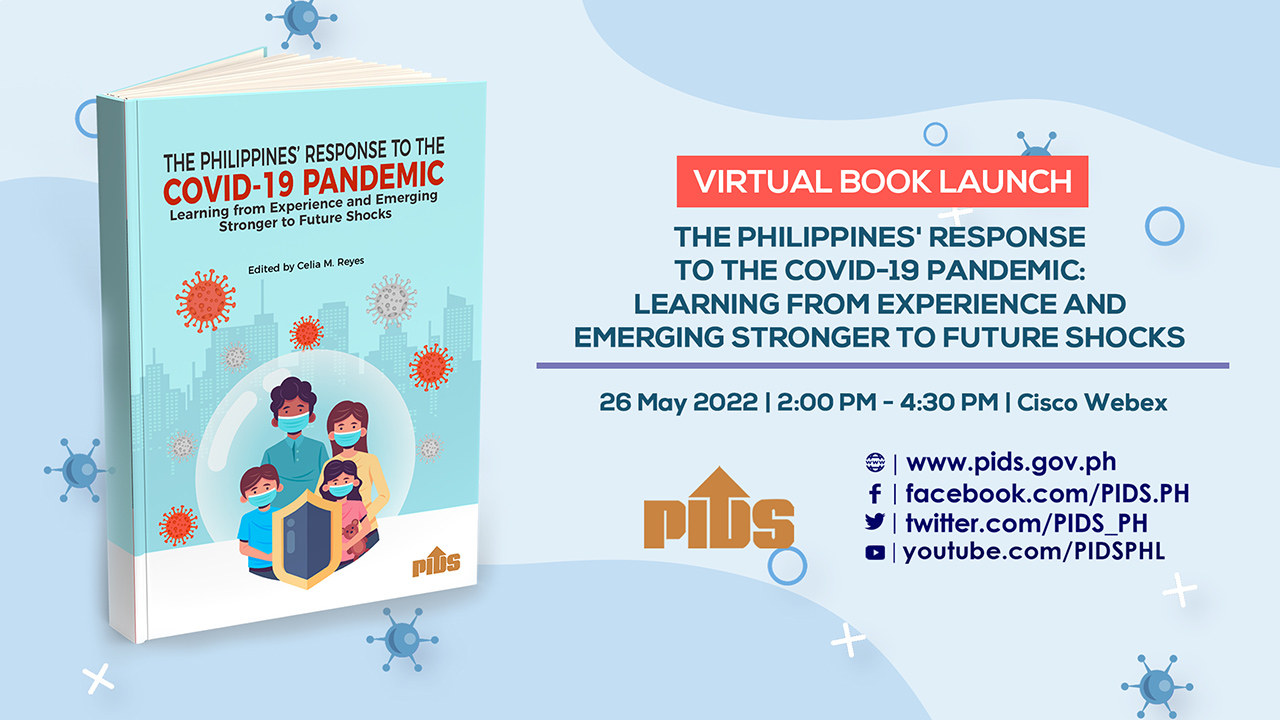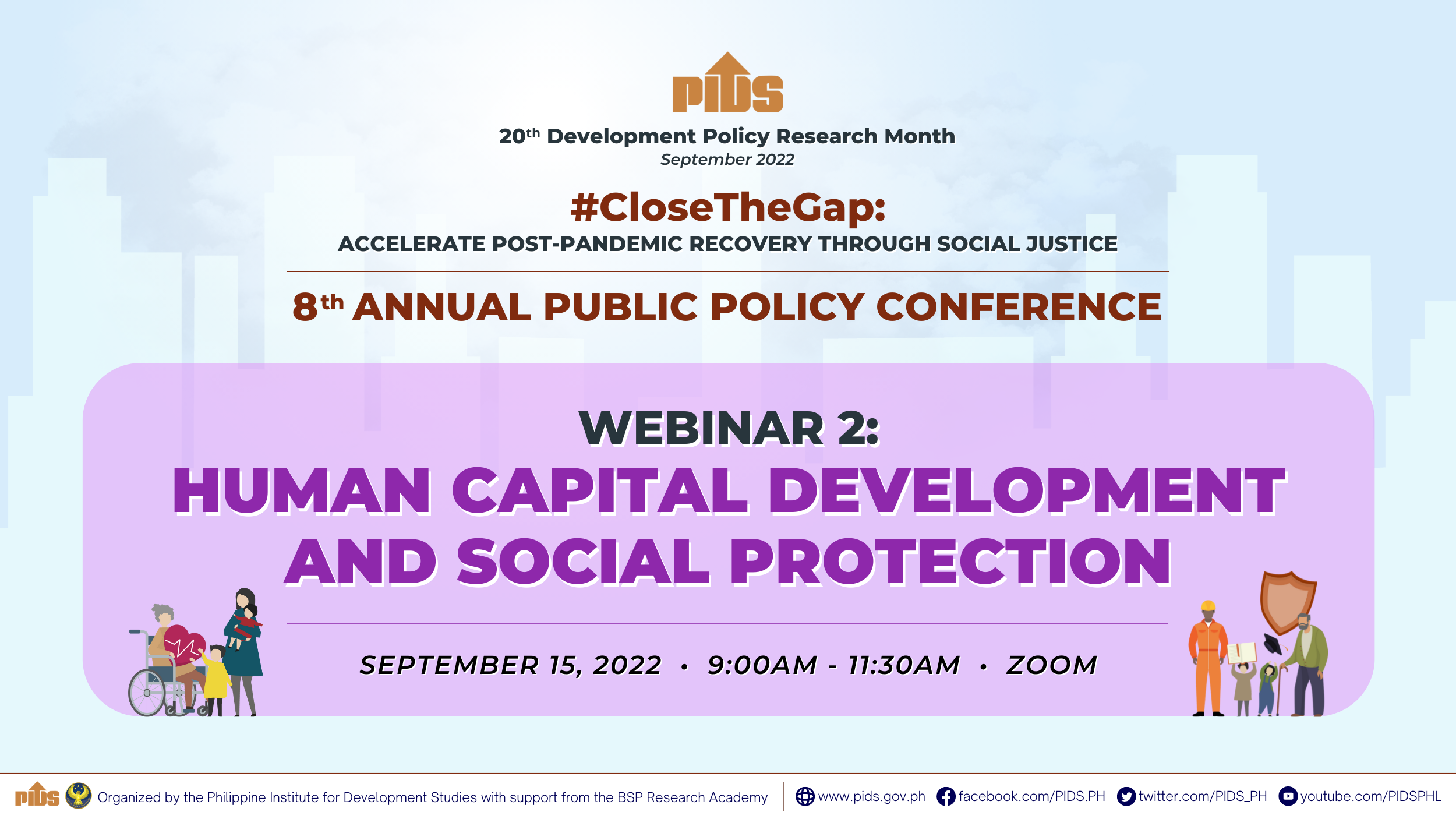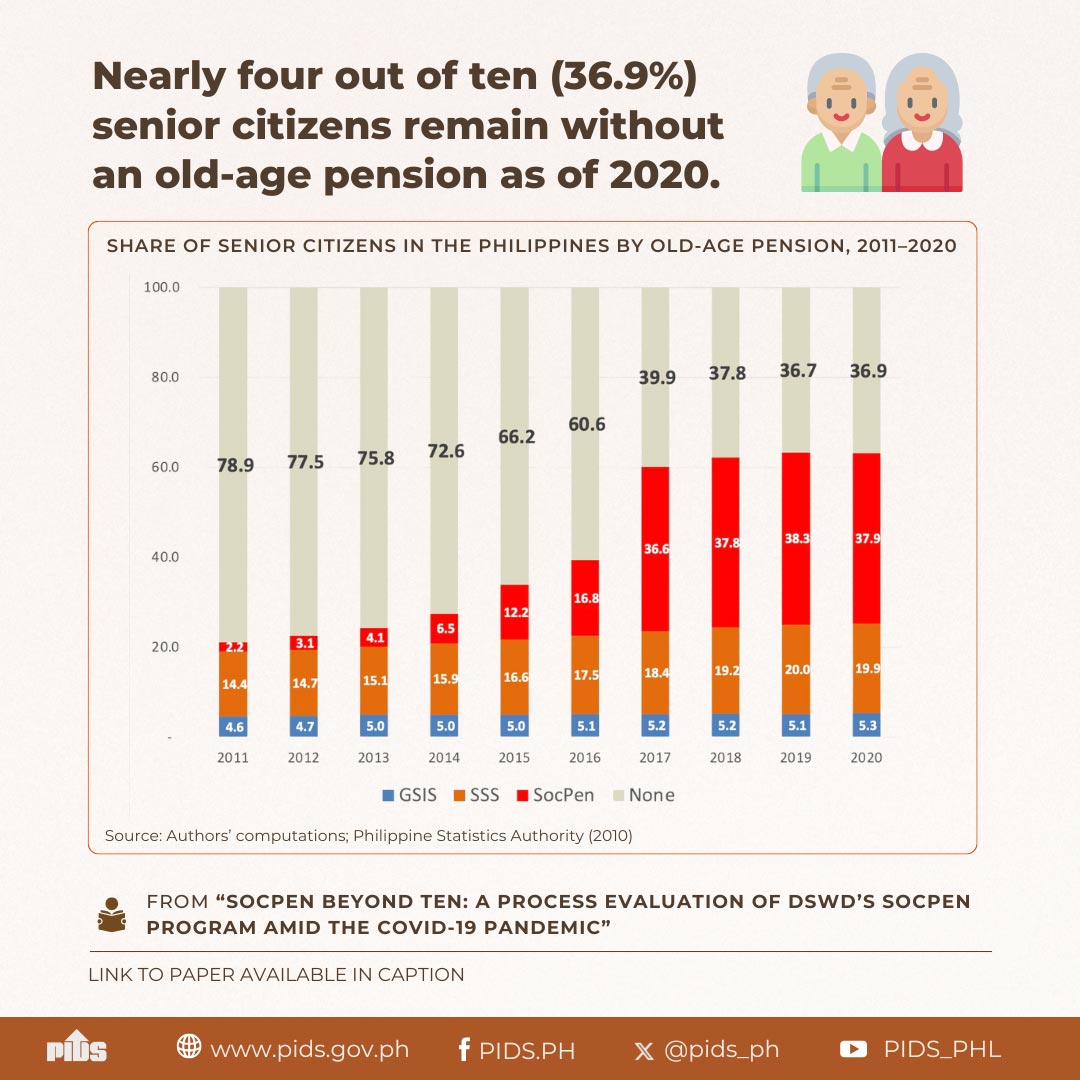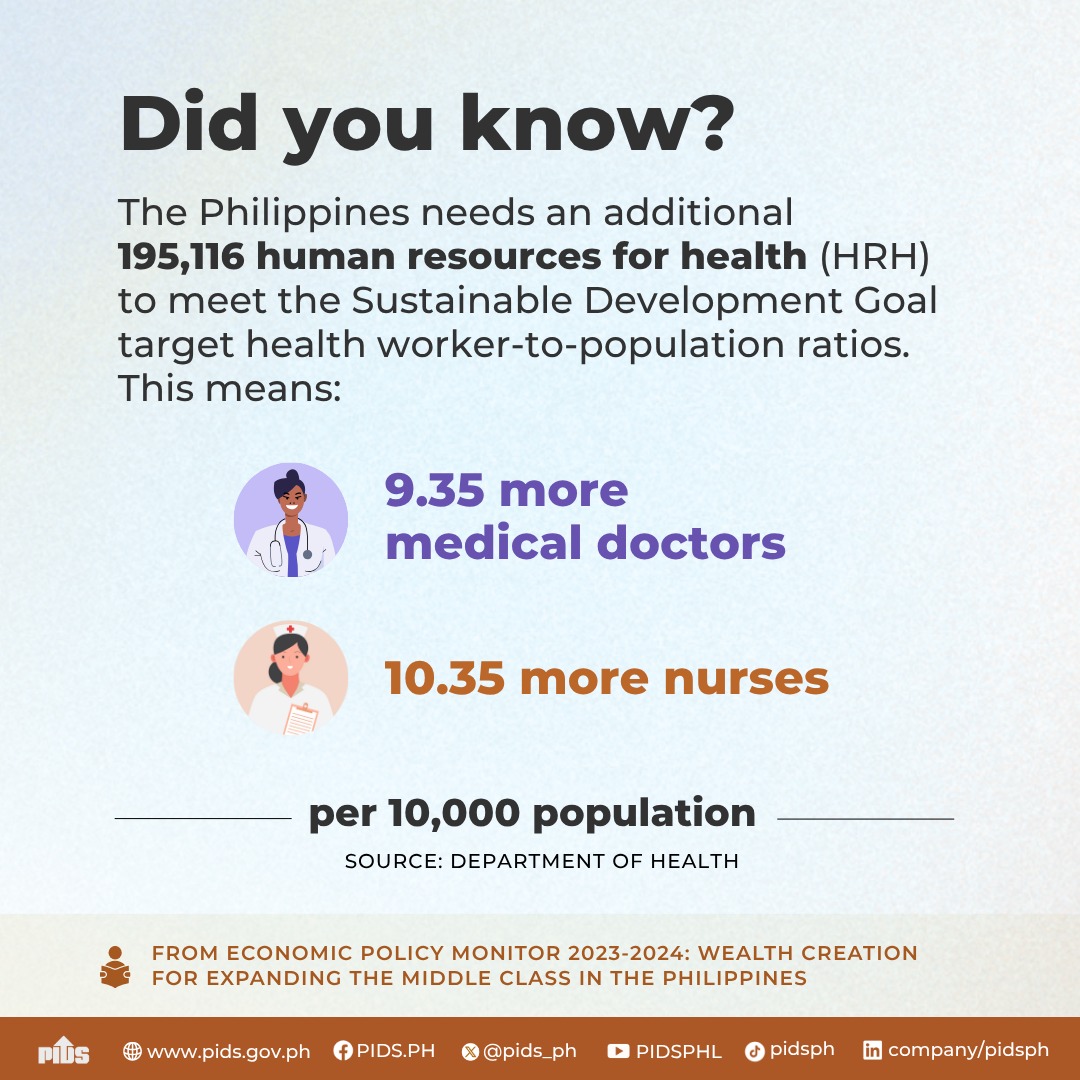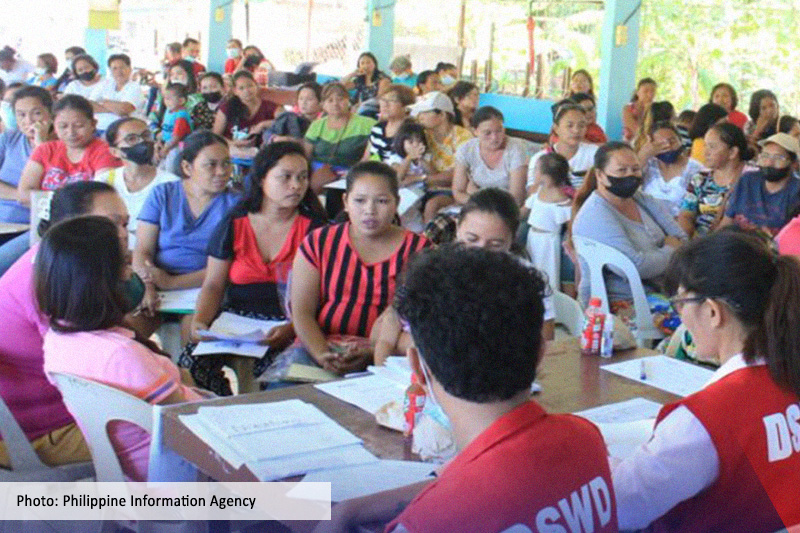
Despite years of economic growth, poverty in the Philippines remains stubbornly high— partly because key programs meant to lift people out of poverty are working in silos.
From 2021 to 2023, the national poverty rate only declined from 18.1% to 15.5%, despite significant government spending on programs aimed at improving incomes and livelihoods.
A study – authored by PIDS Senior Research Fellow Dr. Jose Ramon Albert and BRAC researchers Frances Genevieve Genio and Jan Joy Louise Crismo – looked into how agencies like the Department of Social Welfare and Development (DSWD) and the Department of Labor and Employment (DOLE) are supposed to worked together through “joint programming” or convergence strategies.
“Multiple agencies implement similar interventions, often targeting the same beneficiary populations without clear delineation of responsibilities or systematic coordination,” the authors said.
For example, the DSWD’s Sustainable Livelihood Program, DOLE’s Integrated Livelihood Program often serve the same people, creating duplication and confusion on the ground.
Even the Department of Agriculture runs parallel efforts in the same communities with similar services. The redundancy leads to inefficient resource use and inconsistent service delivery.
Progress and challenges
“While the policy framework for joint programming has evolved significantly over the past decade, operational challenges persist in areas such as resource allocation, beneficiary targeting, and program monitoring,” the authors said.
Budgets are typically tied to specific agencies and sectors, making collaboration difficult.
While the Program Convergence Budgeting (PCB) approach was introduced as a step forward in aligning resources with integrated objectives, the researchers noted that it has been hindered by “institutional rigidities and traditional budgeting processes that often favor sector-specific allocations over integrated approaches,” the authors noted.
Another layer of complexity was added by Executive Order No. 138 (2021), which devolved more responsibilities for service delivery to local government units.
“LGU concerns center heavily around implementation and coordination challenges,” the authors highlighted. A significant disparity exists between urban and rural LGUs in managing joint programming initiatives, with 80% of provincial respondents citing key barriers to effective implementation.
Many LGUs lack specialized staff for program integration and encounter resource limitations, with 70% of municipalities reporting no dedicated budget for joint programming.
Moreover, the lack of a unified data system means agencies cannot track beneficiaries or monitor program outcomes effectively, leading to duplicated aid in some areas and missed opportunities in others.
Recommendations for strengthening social protection and economic inclusion
To improve social protection and economic inclusion, the study calls for a national framework that clearly defines how joint programming and shared data platforms for tracking of beneficiaries should work across agencies and LGUS.
They also highlight the role of the Philippine Identification System (PhilSys), which could help streamline targeting and improve the delivery of services once fully integrated across government system.
The study also suggests boosting local government capacities by investing in training and support to ensure they have the necessary resources and skills to deliver programs effectively.
It also stresses the importance of mandate rationalization to resolve the overlaps in program delivery.
“Clear delineation of roles and responsibilities would ensure that agencies complement each other’s efforts rather than duplicate them,” the authors emphasized.
Improving the budget process and exploring new funding methods can help ensure enough resources for these programs. Additionally, building stronger partnerships with civil society and the private sector can extend the reach of poverty reduction efforts.
The authors further emphasize the need for a unified monitoring and evaluation system across agencies. This integrated system would allow for better tracking of program progress, ensuring that resources are used efficiently and that the intended outcomes are achieved.
“This practice, if adopted more consistently, can significantly improve responsiveness and effectiveness,” the authors said.
Finally, establishing a systematic feedback mechanism, as suggested by several local government unit (LGU) representatives, would further enhance the effectiveness of program monitoring.
A timely study towards poverty reduction
The findings of the PIDS study are especially timely as the Philippine government works towards its poverty reduction target of 9% by 2028.
“The success of these efforts will depend on sustained political commitment, effective inter-agency collaboration, and the active engagement of beneficiaries and communities,” the authors concluded.
Addressing the coordination and integration gaps identified in the report will be crucial in achieving sustainable poverty reduction and inclusive economic growth. – MAEC
————————————————————————————————————————————
The full report, “Assessing the Implementation of Joint Programming in Government Social Protection and Economic Inclusion Interventions in the Philippines,” is available at https://bit.ly/pidsdp2025-02.
Join the discussion at the upcoming seminar-workshop on May 8 by registering at: https://bit.ly/pidsevent050825. Event details can also be checked here: https://pids.gov.ph/details/event/joint-programming-in-social-protection-and-economic-inclusion-successes-challenges-and-ways-forwa.

